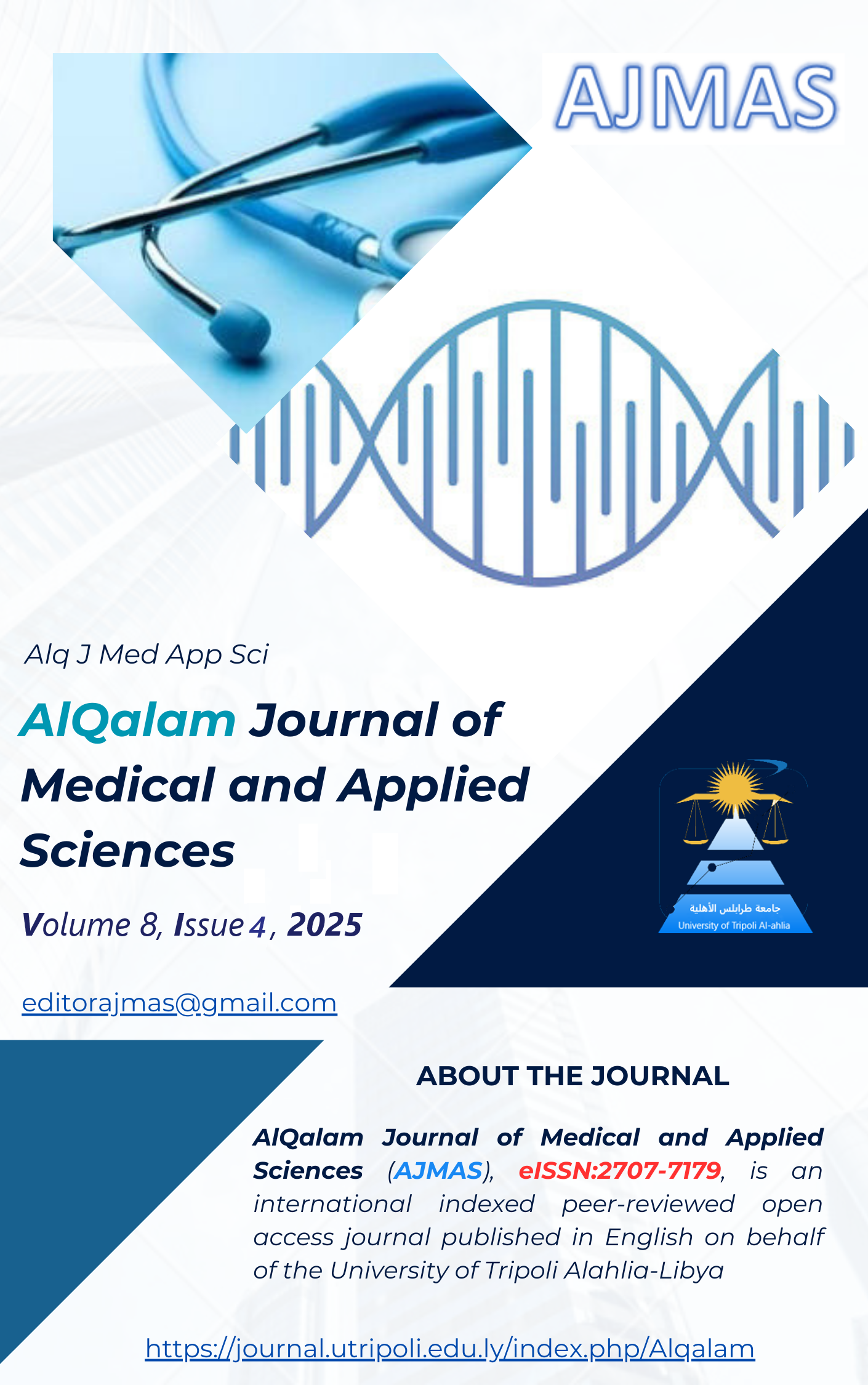Menstrual Cycle Changes Following COVID-19 Infection and Vaccination: Associations with Demographic and Reproductive Factors in Libyan Women
DOI:
https://doi.org/10.54361/ajmas.258406Keywords:
COVID-19 Infection, SARS-CoV-2, Menstrual Cycle Changes, COVID-19 Vaccination, And Libya..Abstract
COVID-19 infection and vaccination have been central to the global pandemic experience, with both associated with systemic effects extending beyond the respiratory system. Nonetheless, emerging reports have raised concern about possible menstrual disturbances, with implications for women’s well-being and quality of life. This study investigated how COVID-19 infection and vaccination influence the menstrual cycle and examined their relationships with demographic, clinical, and reproductive characteristics. A cross-sectional survey was carried out from July to October 2023, including 182 female students aged ≥18 years who had previously regular menstrual cycles and no history of chronic illness. Data were collected using a validated 26-item self-administered questionnaire addressing demographics, COVID-19 history, vaccination status, and menstrual features. Statistical analyses were performed using SPSS version 25. Group differences were evaluated with t-tests, and associations between categorical variables were assessed using the Chi-square (χ²) test. Statistical significance was set at p < 0.05. The participants had a mean age of 25.6 ± 3.2 years; most were aged 25–30 years (68.1%) and unmarried (79.1%). Mean weight, height, and BMI were 65.3 ± 14.2 kg, 161.9 ± 5.9 cm, and 24.8 ± 4.8 kg/m², respectively; 9.3% reported comorbidities. Overall, just over half of the participants (51.6%) reported a previous COVID-19 infection, with the majority occurring more than a year before the survey. Vaccination coverage was high, with 79.1% having received at least one dose, most commonly AstraZeneca (18.8%) or Sputnik V (18.1%). Among those vaccinated, one-third (33.3%) experienced no adverse effects, whereas the most frequently reported reactions were local heaviness at the injection site (20.8%), fatigue (18.8%), and fever (13.9%). Menstrual changes were noted in 33% of women with a history of infection and in 18.1% of vaccinated participants, predominantly affecting cycle length, bleeding volume, and dysmenorrhea. Of note, more than half of affected individuals (56.1%) continued to experience these changes at the time of the survey. No significant differences were observed in the pattern of alterations between infected and vaccinated groups. In participants with previous infection, menstrual changes were significantly associated with higher weight (p = 0.01), cycles exceeding 35 days (p = 0.03), menses longer than seven days (p = 0.02), oral contraceptive use (p = 0.04), and infection within the preceding six months (p = 0.002), with BMI showing an association at the threshold of statistical significance (p = 0.05). No associations were identified with age, marital status, comorbidities, or treatment setting. Among vaccinated participants, menstrual changes were not linked to demographic or clinical variables, vaccine type, or number of doses. In summary, menstrual changes appeared more frequent after COVID-19 infection than after vaccination. Moreover, infection-related alterations were influenced by anthropometric and reproductive characteristics, whereas vaccination was not significantly associated with menstrual outcomes.
Downloads
Published
How to Cite
Issue
Section
License
Copyright (c) 2025 Entesar Alasbaly , Nagat Bettamer, Mayson Elhawat, Hamza Alasbily

This work is licensed under a Creative Commons Attribution 4.0 International License.














